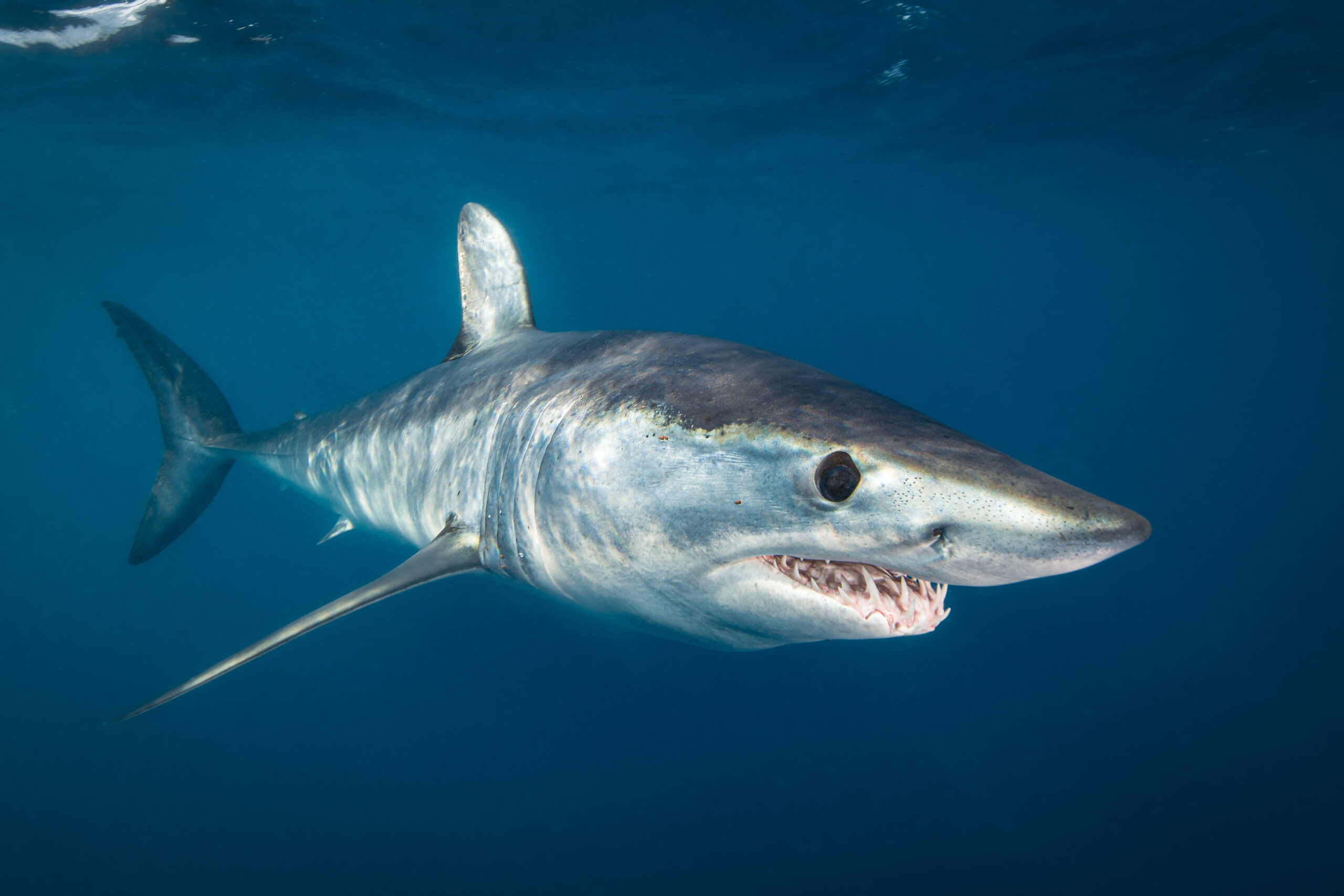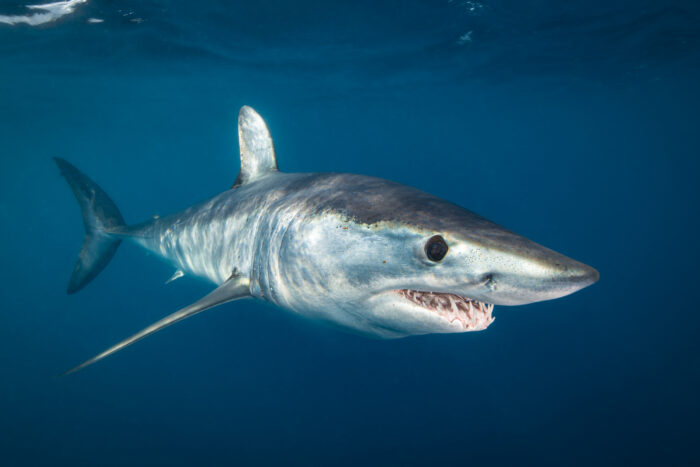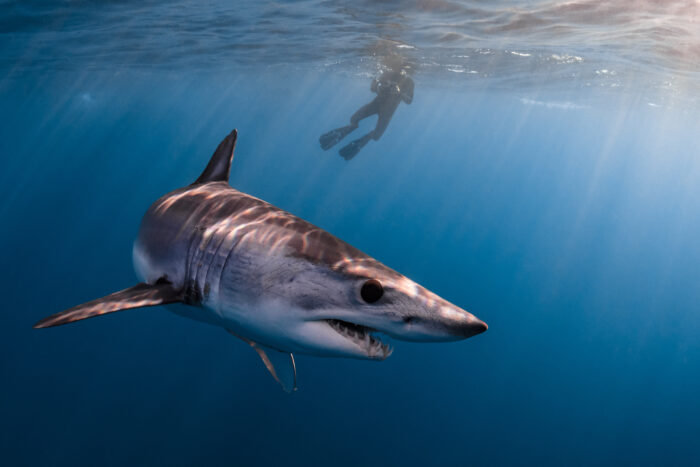
Sea Wonder: Shortfin Mako Shark

Photo credit: Ron Watkins/Ocean Image Bank
The shortfin mako shark (Isurus oxyrinchus) is the fastest known species of shark and one of the fastest fishes on the planet. It can reach speeds of up to 45 miles per hour (that’s as fast as a horse can run!). Shortfin mako sharks are found in tropical and temperate waters worldwide, and they are an important part of the marine ecosystem.
Description
Shortfin mako sharks can reach up to 13 feet in length and eights of at least 1,200 pounds when fully grown. They have dark blue/gray backs, light metallic blue sides, and white undersides. Shortfin mako sharks have very pointed snouts and long gill slits, and their bodies are streamlined, and they are equipped with incredible musculature for quick movement throughout the water. Shortfin mako sharks regulate their body temperatures and blood flow to their muscles using specialized blood vessels.
Diet & Habitat
Shortfin mako sharks are predators in their food webs and have few predators of their own, which mostly consist of larger sharks that feed on smaller species. Shortfin makos are strict carnivores and otherwise are not very picky. They will feed on a variety of species, including bony fishes (including relatively large tunas) and squids, but they also eat other sharks, small marine mammals, sea turtles, and even dead organic matter.
Shortfin mako sharks are a highly migratory pelagic species, meaning they live in the open ocean and travel long distances throughout the year. They are found in continental nearshore areas and offshore waters of tropical and temperate waters worldwide. Juveniles are common in coastal waters, from the low-tide line to the edge of the continental shelf. Adults are primarily found offshore. In the National Marine Sanctuary System, they can be found in or near all of the coastal sanctuaries, including the Florida Keys, Hawaiian Islands Humpback Whale, Cordell Bank, and Stellwagen Bank national marine sanctuaries.
Life History
Shortfin mako sharks are slow to mature and reproduce, but they can live relatively long lives with a lifespan of up to 30 years. These sharks are not able to reproduce until they reach full size, which is about six feet long and 8 or 9 years old for males and about nine feet long and 19 years old for females. Their reproductive season lasts from the summer into the early fall, and they have a three-year reproductive cycle. Fertilization occurs internally and eggs develop and hatch in the mother’s womb. Females give birth to live about 18 months after fertilization. Pups are 18-inches to two feet long when born and the litter does not receive parental investment after they are born. Juvenile and adult shortfin mako sharks are found traveling alone and in small groups.
Threats & Conservation
The shortfin mako shark is a valuable species, but it is also a vulnerable species. The main threats to this species are overfishing and bycatch. Mako sharks are often caught unintentionally as bycatch in tuna fisheries, though they are also targeted for their fins and meat in some countries. The species’ long lifespan and slow reproductive rates make population recovery a challenge as they cannot quickly rebound from the population losses it has already experienced. Increased conservation and management efforts are required to allow for replacement and for young animals to reach adulthood.
In 2019, the IUCN reclassified the shortfin mako shark from vulnerable to endangered, which means there is enough data to show populations are declining and increasingly threatened by extinction. In the same year, they were also classified as an Appendix II species under CITES to monitor and limit international trade of these sharks. In 2021, the International Commission for the Conservation of Atlantic Tunas announced a two-year ban on landing, retaining, and shipping North Atlantic shortfin makos, and, as of July 5, 2022, U.S. fishermen are prohibited from landing or retaining the species.

Photo credit: Hannes Klostermann/Ocean Image Bank
